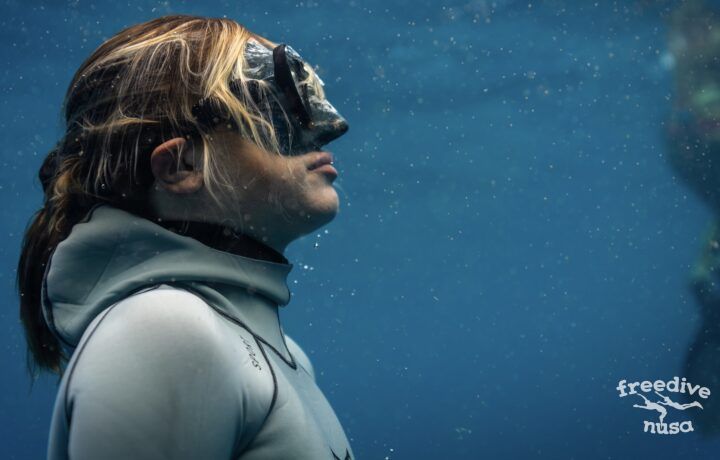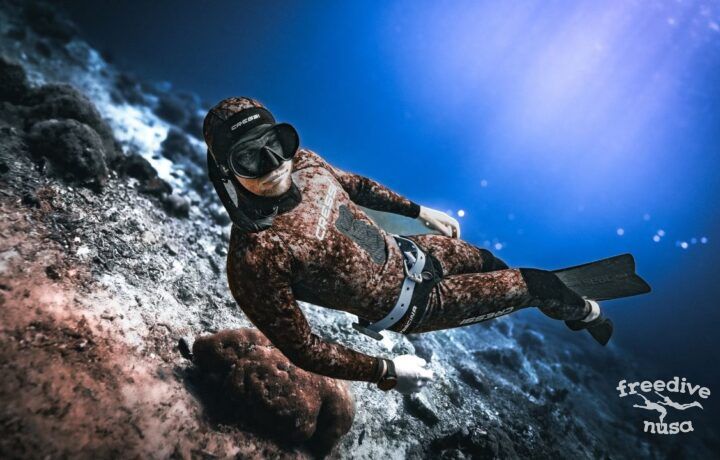We’ve encountered this question from students many times: “Why do I start feeling much more comfortable as soon as I turn and begin my ascent?” A recently asked question inspired us to write this article.
Every one of us, whether a beginner or an experienced freediver, is familiar with this feeling. What a relief it is to turn and start moving towards the surface! The simplest answer is that it’s all in our heads. “It’s obvious, you’re on your way up! So your mind calms down.” But is it really that simple?
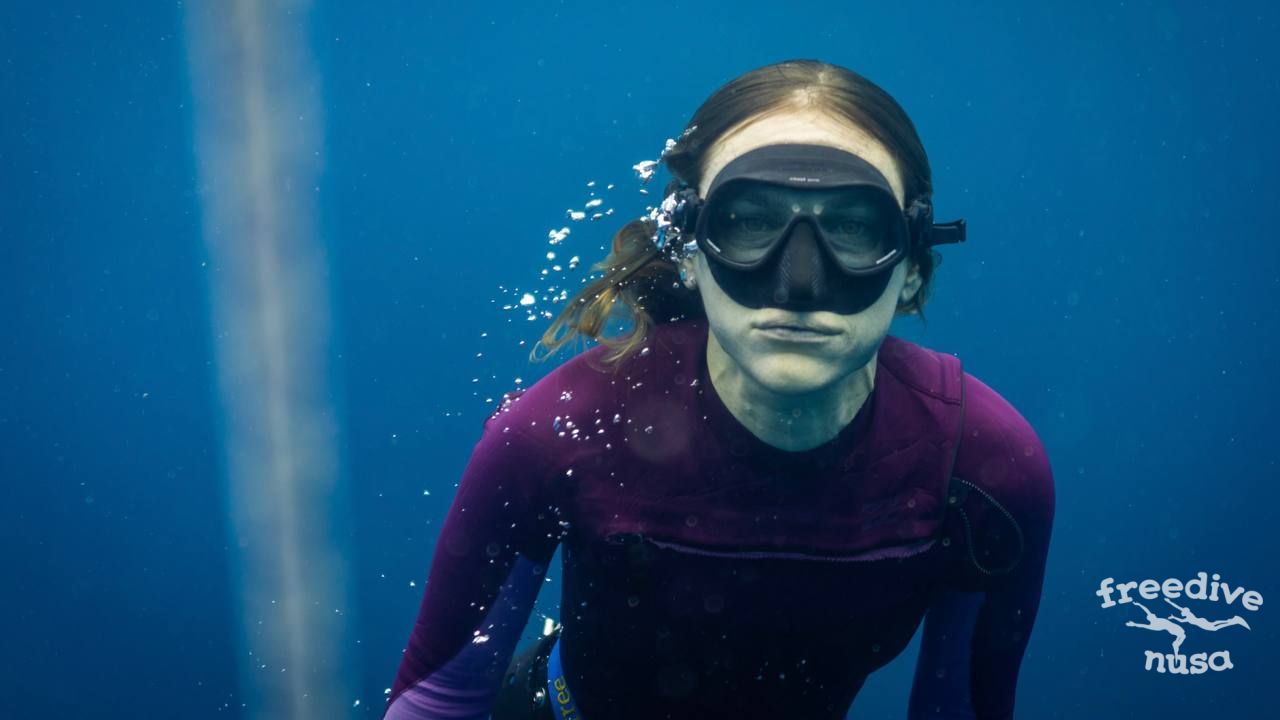
Psychological Factors of the Breathing Urge
Obviously, for any of us, diving on a breath-hold can be psychologically challenging. During the descent phase, several factors signal to us: “Hey, buddy, snap out of it! What are you doing down here?”
- Increasing pressure
- Decreasing light levels
- Equalization becomes more difficult
- The breath-hold time is getting longer
- The distance from the surface is increasing
All these factors, regardless of the actual CO2 and O2 levels (the physiological triggers to breathe), can evoke a “feeling of doom” or simply an unconscious psychological discomfort that we interpret as the urge to breathe.
During ascent, these factors begin to gradually disappear, meaning we receive signals that we are moving in the right direction. Yes, that’s how our mind works. However, psychology is far from the most critical factor, and for some, it’s the least important.
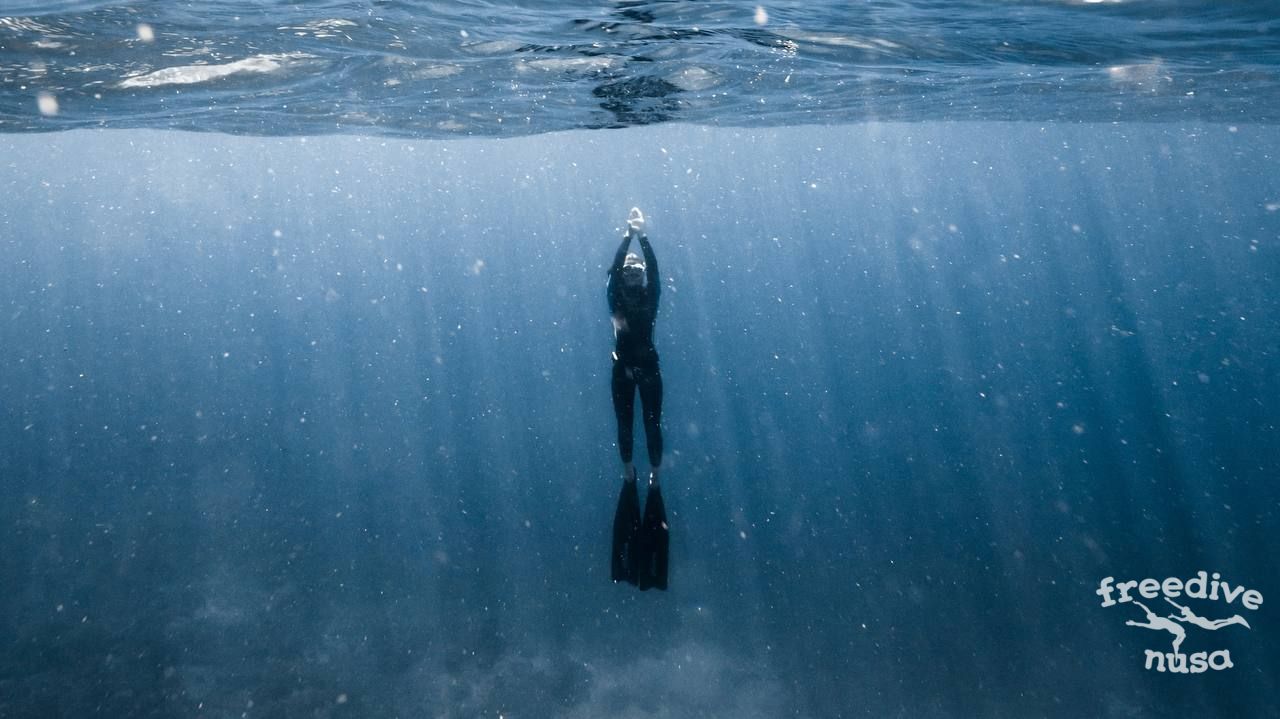
Physical Factors of the Breathing Urge
Another aspect that differentiates ascent from descent is our body position: we typically descend head-first and ascend in the opposite position. This causes specific physiological changes.
Blood Redistribution.
Gravity causes blood to pool in the head, and the Mammalian Dive Reflex reduces cardiac output. This means the vessels in the neck and brain, which contain chemoreceptors sensitive to CO2, become filled with relatively old, stagnant blood. This leads to an overestimation of the overall CO2 content in the blood.
Lung Volume Compression.
Lung volume changes inversely with pressure (+1 ATM every 10 meters). For instance, at 30 meters, lung volume is reduced to a quarter of its surface volume, reaching the Residual Volume (the air left in the lungs after a maximal exhalation). This likely affects the stretch receptors in the lungs, contributing to the desire to breathe.
Air Pressure on the Diaphragm.
Like a balloon submerged in water that wants to rise (hello, Archimedes’ principle), the air in our lungs also wants to move upward. Since we are descending head-first, this air presses against the diaphragm, which can further stimulate the breathing urge. As soon as we return to a head-up position, this effect vanishes.
You can test these physical factors with a simple experiment. During your warm-up and while doing a hang (static apnea at depth), try hanging upside down instead of the usual head-up position. Even though the psychological and physiological factors remain the same in both scenarios, you will likely find you can hold your breath longer and feel more comfortable in the head-up position.
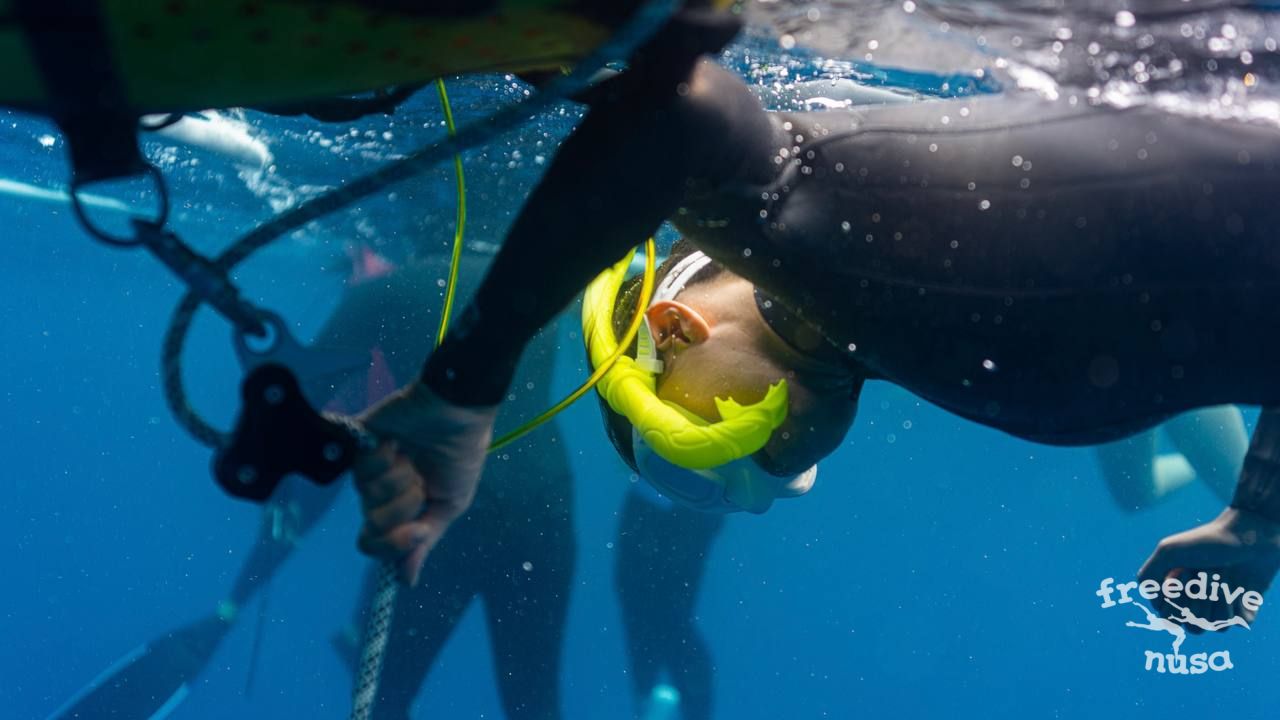
Physiological Factors of the Breathing Urge
We all know that the urge to breathe is primarily triggered by an increase in the partial pressure of carbon dioxide (CO2) in the blood and, to a lesser extent, by a drop in the partial pressure of oxygen (O2). However, these changes occur continuously throughout the dive. By that logic, the urge to breathe should be strongest at the very end of the dive, right?
Actually, we must not forget the laws of physics, specifically those of Boyle and Dalton. The urge to breathe arises when the arterial partial pressure of CO2 reaches about 6 kPa. We start a dive with a partial pressure of 3-4 kPa.
During the descent, the partial pressure of CO2 increases not only (and not primarily) because we produce CO2 through metabolism and don’t exhale it, but also due to the increasing ambient pressure. Furthermore, quite soon, due to the reduction in lung volume, the partial pressure of CO2 within the lungs becomes higher than in the blood. This reverses the diffusion gradient, causing CO2 to move from the alveoli back into the blood.
The increase in CO2 pressure between the start and end points of the dive is the amount of CO2 our body has generated. The rest of the increase (which is much larger) in the partial pressure of CO2 during the dive is simply the work of physics laws, which in turn affect the physiology of the dive and the desire to breathe.

Based on our observations, these are the primary factors, listed in order of importance, that so significantly ease the urge to breathe during ascent.

